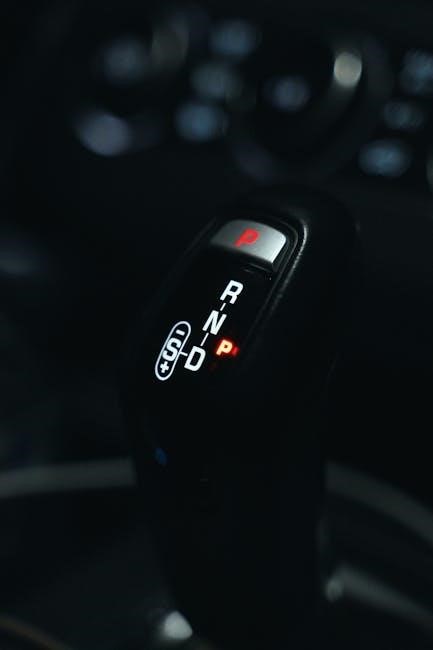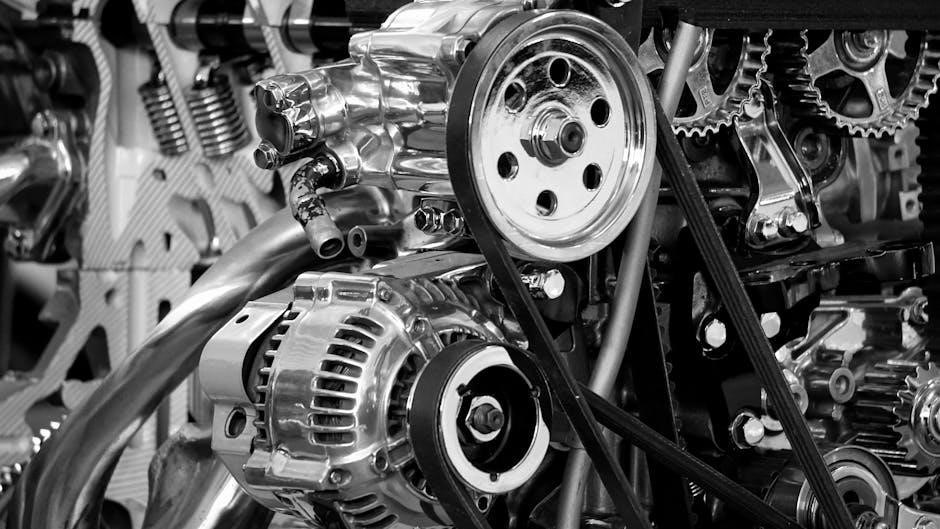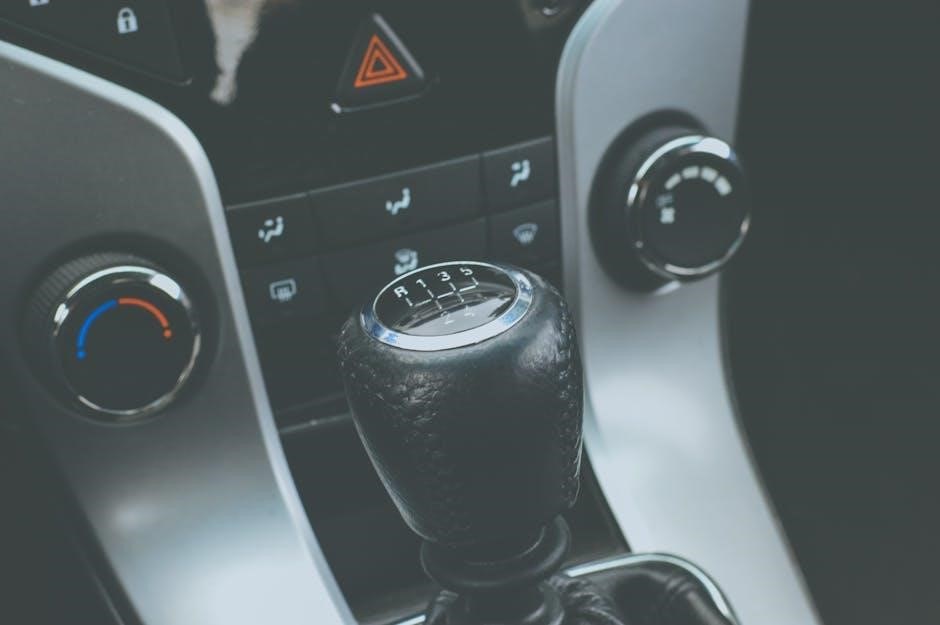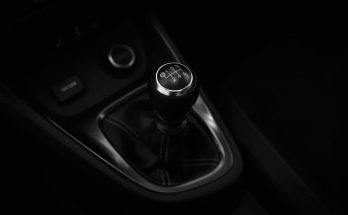D16Y8 Transmission Manual: A Comprehensive Guide
This comprehensive guide will explore the D16Y8 transmission, a popular choice among Honda enthusiasts․ We delve into its specifications, compatibility, common issues, and performance upgrades․ Learn everything about this robust manual transmission and its role in the D-series engine family․
The Honda D16Y8 engine, a 1․6-liter SOHC VTEC powerhouse, is celebrated for its balanced performance and reliability․ Commonly found in 1996-2000 Honda Civic EX models, it delivers 127 hp at 6,600 rpm and 107 lb-ft of torque at 5,500 rpm․ The D16Y8’s VTEC system optimizes performance at both low and high RPMs․
Paired with the D16Y8 engine is typically the S40 manual transmission․ Known for its robust design, the S40 is a 5-speed manual known for its smooth operation and is considered a good match for the D16Y8’s powerband․ The D16Y8 transmission’s gear ratios are well-suited for maximizing the engine’s potential․ Its welded steel shift forks increase durability․ This combination is cherished by Honda enthusiasts for its versatility and ease of modification․
This guide will provide valuable insights into the D16Y8 engine and transmission, covering specifications, maintenance, troubleshooting, and performance upgrades․

D16Y8 Engine Specifications
Delving into the D16Y8 engine, this section explores its core specifications․ From displacement and bore to horsepower and ECU codes, understand the engine’s vital stats․ This detailed overview provides essential insights for enthusiasts and mechanics alike․
Displacement, Bore, and Stroke
The D16Y8 engine boasts a displacement of 1590cc, achieved through a carefully balanced bore and stroke․ The bore measures 81mm, while the stroke is 77․4mm․ This combination contributes to the engine’s performance characteristics, providing a good mix of power and efficiency․ The D16Y8’s 1․6-liter displacement offers a sweet spot, making it a popular choice for tuners and everyday drivers․
The bore and stroke dimensions play a crucial role in determining the engine’s torque and horsepower output․ The slightly oversquare design (larger bore than stroke) allows for higher revs and increased horsepower potential․ Understanding these measurements is essential for anyone looking to modify or rebuild their D16Y8 engine․ The D16Y8’s design choices contribute to its overall reliability and performance; These specifications make it a versatile and appreciated engine․
Horsepower and Torque Output
The Honda D16Y8 engine is known for its respectable horsepower and torque figures․ It produces 127 horsepower at 6,600 rpm․ This power output makes it a fun and engaging engine to drive․ The engine also generates 107 lb-ft of torque at 5,500 rpm․ This torque provides decent acceleration and responsiveness in everyday driving situations․
The D16Y8’s VTEC system helps to optimize both horsepower and torque output across the rev range․ The engine’s peak power and torque figures make it a popular choice for those seeking a balance of performance and fuel efficiency․ The D16Y8’s power delivery is well-suited for a variety of driving styles, from spirited backroad runs to comfortable highway cruising․ These specifications are key to understanding its appeal․
ECU and Piston Codes
Identifying the correct ECU and piston codes is crucial for proper engine management and maintenance․ The D16Y8 engine typically uses the P2P ECU․ This ECU is specifically programmed to optimize the engine’s performance with its VTEC system and fuel mapping․ Using the correct ECU ensures that the engine runs efficiently and reliably․
The D16Y8 engine also uses P2P pistons․ These pistons are designed to work in conjunction with the engine’s cylinder head and combustion chamber․ Using the correct pistons is essential for maintaining the engine’s compression ratio and preventing engine damage․ These codes are vital for replacement or upgrades․ Correct codes ensure optimal engine operation․

D16Y8 Transmission Specifications
Understanding the D16Y8 transmission specifications is essential for maintenance, repair, and performance upgrades․ This section will cover gear ratios, the S40 transmission overview, and methods for identifying the correct transmission model․
Gear Ratios for Different Models
Understanding the gear ratios of the D16Y8 transmission and how they compare to other Honda models is crucial for performance tuning and transmission swaps․ The D16Y8 typically features specific gear ratios in its S40 transmission, optimized for the engine’s powerband․ First gear usually starts at 3․250․ Second gear is 1․909․ Third gear comes in at 1․250․ Fourth gear is 0․909․ Fifth gear is 0․702․ The final drive ratio is 4․250․
These ratios provide a balance between acceleration and fuel economy․ Comparing these ratios to those of the D16Y7 or D16Y5 transmissions reveals subtle differences․ The D16Y8 offers unique advantages․ Knowing these differences is essential when considering transmission swaps or modifications․
For example, the D16Z6 transmission has nearly identical gearing to the Y8, except for second gear․ The D16Y1 gearbox is known for having the shortest ratios․ This information helps enthusiasts make informed decisions․ This optimizes their vehicle’s performance based on their specific needs and driving style․
S40 Transmission Overview
The S40 transmission is commonly paired with the D16Y8 engine in various Honda Civic models․ This transmission is known for its reliability and relatively smooth shifting․ The S40 is a 5-speed manual transmission designed to complement the D16Y8’s power output․ It is also good for fuel efficiency․ It features specific gear ratios tailored to the engine’s performance characteristics․
One notable feature of certain S40 transmissions is the presence of welded steel shift forks․ These are more durable compared to the cast aluminum forks found in some other Honda transmissions․ This contributes to the S40’s reputation for longevity․
However, some S40 transmissions might have variations in their internal components․ This depends on the specific model and year․ Understanding these variations is crucial when sourcing replacement parts or considering performance upgrades․ The S40’s design and construction make it a popular choice for both daily driving and performance applications․ It is also easy to maintain․
Identifying the D16Y8 Transmission
Correctly identifying the D16Y8 transmission is crucial for maintenance, repairs, and performance upgrades․ One method involves locating the transmission code stamped on the transmission casing․ This code is usually near the fill plug․ The code will help you confirm if it is the correct transmission for your D16Y8 engine․
Another way to identify the transmission is by visually inspecting its external features․ The S40 transmission, commonly paired with the D16Y8, has a distinct appearance․ Comparing the transmission to reference images or diagrams can help confirm its identity․
Note that some transmissions may have similar external features but different internal gear ratios; Checking the internal gear ratios involves disassembling the transmission․ This is not recommended for casual identification purposes․ Always double-check the transmission code to ensure accurate identification before buying․ If you are still unsure, seek help from a professional mechanic;
Transmission Swaps and Compatibility
Understanding which transmissions are compatible with the D16Y8 engine is key for swaps and upgrades․ Several Honda transmissions can be used, each offering different gear ratios and performance characteristics․ Careful research ensures proper fitment and optimal performance․
Compatible Transmissions with the D16Y8 Engine
The D16Y8 engine, known for its versatility, offers several transmission swap options․ The S40 transmission, which originally came with the D16Y8, is a direct fit and provides the most seamless integration․ Other compatible options include transmissions from D16Y7 and D16Z6 engines, although slight differences in gear ratios exist, particularly in second gear․
For those seeking shorter gearing, transmissions from earlier DOHC CRX models or even the EG5 (D16Y1) offer more aggressive acceleration․ However, modifications may be required․ It’s crucial to verify the transmission code (e․g․, A000, B000) stamped on the case to identify the specific model․ The HF transmissions have different ring gears․
When considering a swap, bear in mind the potential need for ECU adjustments to optimize performance with different gear ratios․ Consulting transmission spec charts and forums is highly recommended to ensure compatibility and achieve the desired driving experience․
Differences Between D16Y7 and D16Y8 Transmissions
While both the D16Y7 and D16Y8 engines often utilize the S40 transmission, subtle differences exist․ The most notable variation lies in the gear ratios․ The D16Y8 transmission generally features a slightly shorter second gear (1․909) compared to the D16Y7 (1․782), providing enhanced acceleration․
Externally, the transmissions appear identical․ Identifying the specific model requires checking the transmission case for codes like A000 (Y7) and B000 (Y5/Y8)․ The D16Y8 transmission is often favored due to its welded steel shift forks․ The D16Y7 transmission has cast aluminum forks․
Although interchangeable, matching the transmission to the engine’s powerband is ideal; Swapping a D16Y8 transmission into a D16Y7-powered vehicle might necessitate ECU adjustments for optimal performance․ Conversely, a D16Y7 transmission in a D16Y8 setup may slightly alter acceleration characteristics․

Common Issues and Troubleshooting
Several common issues can plague the D16Y8 transmission, requiring diligent troubleshooting․ Grinding during gear changes often indicates worn synchronizers, especially in second and third gear․ Difficulty shifting into gear may stem from a damaged clutch, worn shift linkage, or low transmission fluid․
Unusual noises, such as whining or humming, could point to worn bearings within the transmission․ Fluid leaks are another prevalent problem, typically originating from the axle seals, input shaft seal, or the transmission case itself․ Regular fluid checks and timely replacements are crucial for preventing premature wear and tear․
Troubleshooting often involves a process of elimination․ Start by inspecting the shift linkage for proper adjustment and signs of damage․ Next, check the transmission fluid level and condition․ If problems persist, a more thorough internal inspection may be necessary, potentially requiring professional assistance․
Manual Transmission Maintenance and Repair
Maintaining your D16Y8 manual transmission is paramount for longevity and optimal performance․ Regular fluid changes are essential, typically every 30,000 to 60,000 miles, using Honda Genuine Manual Transmission Fluid (MTF) or a compatible alternative․ Inspect the fluid regularly for contamination or a burnt smell, indicating potential problems․
Clutch maintenance is also critical․ Check the clutch cable or hydraulic system for proper adjustment and signs of wear․ Replace the clutch disc, pressure plate, and throw-out bearing as needed to prevent slipping or difficulty shifting․ Shift linkage maintenance involves lubricating the pivot points and adjusting the linkage for smooth and precise gear changes․
Repairing a D16Y8 transmission often requires specialized tools and knowledge․ Worn synchronizers, bearings, or gears may necessitate a complete rebuild, best left to experienced technicians․ Always consult a service manual and follow proper procedures when performing any maintenance or repair work․
Performance Upgrades for the D16Y8 Transmission
Enhancing the performance of your D16Y8 transmission can significantly improve the driving experience․ One popular upgrade is installing a short shifter, which reduces the throw between gears for quicker and more precise shifts․ Upgraded shift bushings can also improve shift feel by eliminating play in the linkage․
For more aggressive modifications, consider a limited-slip differential (LSD)․ An LSD helps distribute power evenly to both wheels, improving traction and cornering performance, especially during spirited driving or racing․ Upgrading to stronger aftermarket gears can also enhance the transmission’s durability, particularly when combined with a high-horsepower engine․
Furthermore, a lightweight flywheel reduces rotational inertia, allowing the engine to rev more quickly․ However, it may also make the car more challenging to drive smoothly at low speeds․ When choosing performance upgrades, consider your driving style and the intended use of the vehicle․

Torque Specifications for Engine Components
Proper torque specifications are crucial for ensuring the longevity and performance of your D16Y8 engine․ Incorrect torque can lead to component failure, leaks, or even catastrophic engine damage․ When reassembling the engine, it is essential to consult a reliable service manual for the correct torque values․
Cylinder head bolts, connecting rod nuts, and crankshaft pulley bolts all have specific torque requirements․ For example, cylinder head bolts typically require a multi-step torque procedure, often involving an initial torque value followed by an angle torque․ Connecting rod nuts also have a specific torque value to ensure proper bearing crush․
The crankshaft pulley bolt requires a high torque value to secure the pulley to the crankshaft․ Always use a calibrated torque wrench to ensure accurate torque application․ Following the correct torque specifications will help ensure your D16Y8 engine operates reliably․



